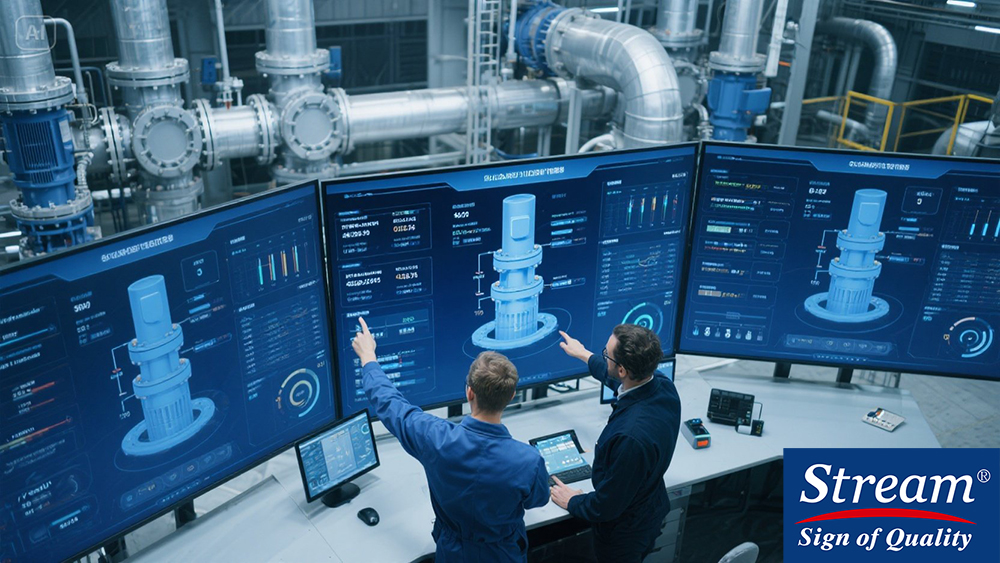+86 13816508465
Pump Knowledge
May. 24, 2025

How Building Management Systems Improve Flood Prevention and Operational Efficiency
Water intrusion is one of the most significant risks facing commercial office buildings. From basements to parking garages and critical mechanical rooms, unchecked flooding can damage assets, disrupt operations, and result in costly repairs. Reliable sump pump systems play a vital role in safeguarding these spaces, preventing water build-up, and ensuring the safety of your building.
In an era where modern facility operations demand greater automation and oversight, the integration of sump pump systems with Building Management Systems (BMS) offers a powerful solution. This post explores how advanced sump pump controls and BMS integration can protect office buildings, increase efficiency, and simplify maintenance.
What Is a Sump Pump System in a Commercial Building?
A sump pump system is a critical component in water management for commercial properties. It works by collecting and discharging water that accumulates in areas below ground level, preventing flooding.
Key Components
Sump Pit: The reservoir where water collects before being pumped out.
Submersible Pump: Sits inside the sump pit and actively pumps water out.
Float Switch or Sensor: Activates the pump when water reaches a specific level.
Discharge Line: Directs the pumped water away from the building.
Common Locations
Sump pumps are typically used in areas like underground parking garages, elevator shafts, mechanical rooms, and HVAC equipment pits.
Types of Pumps
Single-Stage Submersible Pumps: Cost-effective for smaller loads.
Dual-Pump Systems: Include a primary pump and a backup pump to provide redundancy and reliability.
Key Control Requirements for Sump Pumps in Office Buildings
Effective sump pump systems rely on smart control requirements to maximize reliability and operational efficiency.
Automatic Water Level Detection and Activation
The pump must automatically engage when water levels get too high, ensuring rapid response during heavy rainfall or plumbing leaks.
Redundancy for Reliability
A backup pump is critical, especially in mission-critical areas like IT rooms or elevator shafts. If the primary pump fails, the backup ensures uninterrupted functionality.
Alarm Triggers
Alarms should signal failures, high water levels, or power losses, with notifications sent to building operators or facility managers for immediate action.
Remote Monitoring and Data Logging
Remote monitoring capabilities keep maintenance teams informed about pump performance, operating hours, and potential issues, enabling predictive maintenance strategies.
Integration with Building Management Systems (BMS)
Integrating sump pumps into your BMS brings unparalleled levels of control and insight.
Communication Protocols
Common protocols like Modbus and BACnet enable seamless communication between pump control panels and the BMS. These protocols standardize data exchange, simplifying integration.
How Connection Works
Pump control panels link to the BMS via digital I/O or communication gateways, relaying real-time data for central monitoring.
Data Collected by BMS
Pump status (on/off)
Runtime hours
Cycle counts
Alarm notifications
Benefits of Integration
Predictive Maintenance: Track performance indicators like runtime anomalies to schedule maintenance before failures occur.
Central Monitoring: Facility managers can oversee multiple systems from a single interface.
Reduced Downtime: Early warning signals allow faster response to issues, minimizing disruptions.
Control Panel Design and Functionality
Well-designed control panels are the backbone of efficient sump pump systems. These panels house critical components and provide operators with comprehensive control over operations.
Key Components
Control Relays and Motor Starters: Ensure smooth pump activation.
Thermal Protection: Safeguards against pump overheating.
Panel Alarms: Visual or audible alerts for failures or abnormal conditions.
Smart Controllers
Programmable logic controllers (PLCs) allow advanced automation, such as alternating pump cycles or self-testing routines.
Power Supply Considerations
Standard panels support single-phase or three-phase power. For uninterrupted operation during outages, backup systems like UPS or generators are essential.
Advanced Features and Best Practices
Taking sump pump controls to the next level involves adopting smart features and following best practices to ensure reliability.
Advanced Features
Alternating Control: For dual-pump systems, alternating between pumps helps balance wear and extend lifespan.
High-Level Alarms: Provide both visual and audible signals, along with BMS notifications.
Dry Run Protection: Prevents pumps from running without water, avoiding damage.
Integration with Generators: Ensures pumps continue to work during power outages.
Periodic Self-Testing: Reduces the risk of the pump seizing during lengthy idle periods.
Best Practices
Adequate maintenance access can streamline repairs and inspections.
Control panels should be positioned away from flood-prone areas.
Use smart sensors to detect problems early and maintain consistent operations.
Case Application: A Real-Life Office Building Setup
Imagine a typical high-rise office building with a two-pump setup in the basement. The system includes three float switches (low level, high level, and alarm) connected to a BMS.
Configuration: Pumps alternate between cycles for even wear. The backup pump activates only during high water levels.
Flow and Head Selection: Pumps are selected based on the building’s specific water removal needs, ensuring they can handle peak loads.
Maintenance Setup: Accessible control panels allow quick inspections, and alarm systems notify staff of any issues promptly.
This setup demonstrates how a thoughtfully designed system can enhance building efficiency and prevent water damage.
Protect Your Building with Advanced Sump Pump Controls
Commercial office environments demand reliable solutions to combat water intrusion. Integrating sump pump systems with Building Management Systems not only prevents flooding but also enhances operational efficiency through predictive maintenance and centralized monitoring.
For best results, it's crucial to work with suppliers who offer high-quality pumps and advanced control panels designed for seamless BMS integration. With the right setup, your building can enjoy long-term safety, cost savings, and peace of mind.
Boost your building's performance and protect it from water risks today. Partner with an expert team to take the next step in sump pump control.
Address
No.17 XeDa Jimei Ind. Park, Xiqing Economic Development Area, Tianjin, China
Telephone
+86 13816508465
QUICK LINKS